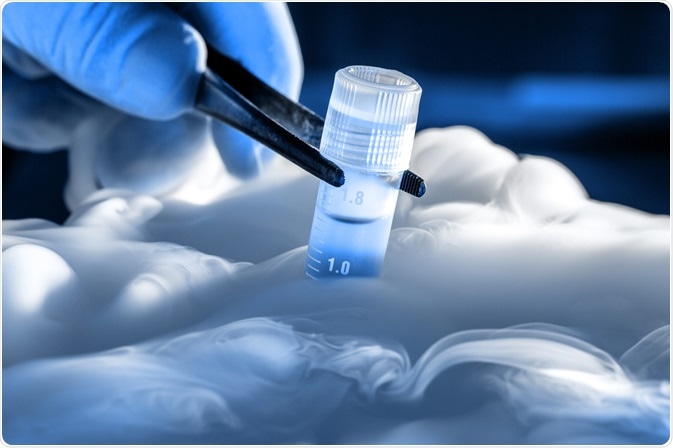DNA is very sensitive and can easily degrade in certain conditions. Thus, proper storage is required to ensure high experimental standards. There are several mechanisms to store DNA for long periods of time.
 sruilk | Shutterstock
sruilk | Shutterstock
What causes DNA to degrade?
Chemical degradation is the main threat to DNA preservation. Potential nuclease contamination and the presence of free radicals can also cause damage to DNA and other nucleic acids, such as RNA. Storage strategies for DNA will depend on the type of DNA, temperature of storage, intended use of the sample, and the length of time that the DNA is to be stored for.
Storage in vitreous state
In vitreous state, molecules cannot diffuse, this means that a proton’s movement is limited to around one atomic diameter every 200 years, which effectively inhibits all chemical and nuclease degradation. Adding moisture to the dry state or raising the temperature will reestablish reactivity and movement of the protons, once more exposing DNA to potential damage.
DNA stored in a dry state will also remove water, which is active in hydrolytic reactions and can degrade DNA. Since moisture can reestablish proton movement, DNA stored in the dry state should be kept at low humidity.
Drying can be done by spray drying, spray freeze drying, and air drying or lyophilization. Of these, the latter is the cheapest and most popular method. Another method of dry long-term storage is on FTA cards, which enables preservation for 17 years. In general, DNA storage in dry conditions optimum ibecause hydrolysis is the biggest cause of DNA degradation.
Medium length storage
Storage of the sample at -20 °C and -80 °C is less effective than storage in vitreous state, but can provides a useful short-term solution. Liquid nitrogen storage preserves DNA quality over the course of decades, whereas storage at -20 °C and -80 °C can prevent degradation for months or years.
To prevent degradation by chemical and enzymatic processes, DNA is often stored as a precipitate in ethanol, at -80 °C. This increases nucleic acids stability, but means that the ethanol must be removed prior to use. Hence, this technique is considered to be undesirable.
Repeatedly freezing and thawing DNA
A major misconception is that repeated freeze and thaw cycles have a deleterious effect on the quality of the DNA. However, studies show that repeated freeze and thaw cycles with up to 19 cycles have no detected DNA degradation.
Some studies indicate that DNA can be satisfactorily kept at room temperature and 4 °C. Such samples were kept in TE buffer, and were stable for 6 to 12 months. However, such DNA samples need to be monitored for DNA concentration and evaporation.
Further Reading